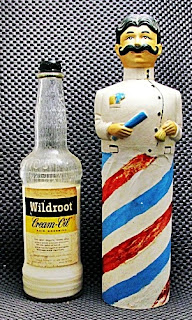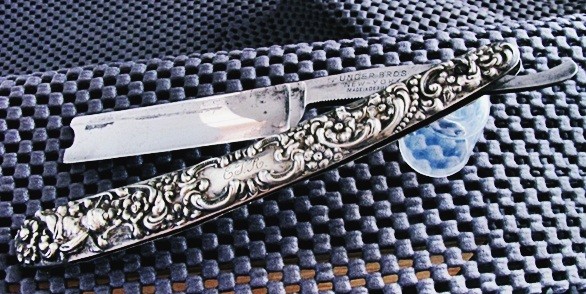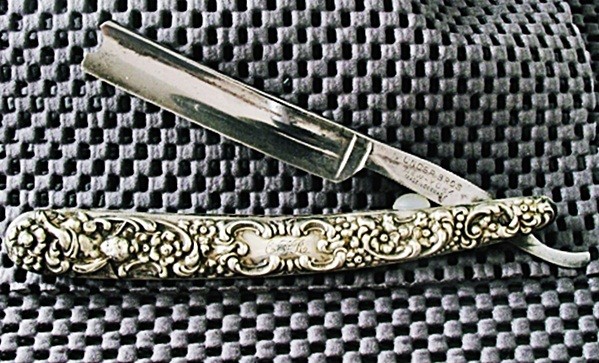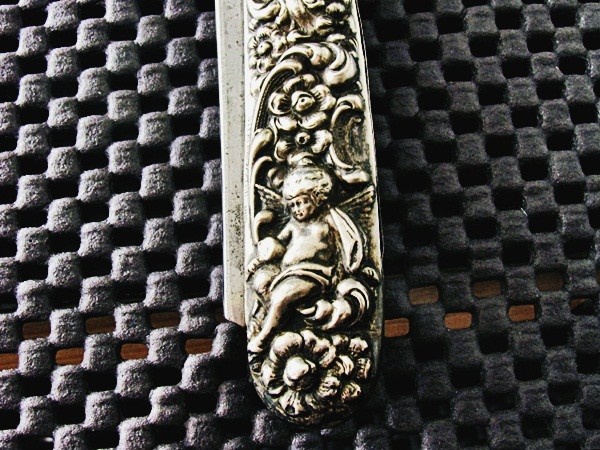Going Green By Shaving Straight
Four Alternatives To Disposable Plastic Razors & Cartridges
By John H. Tischler
(Note: The author sells vintage & antique straight razors & safety razors)
There is something that unites men of all nationalities, colors, religions and sexual preferences; something as basic to our genetic code as our desire to avoid yard work – we all grow facial hair. For the majority of us who want to remove it without having a negative impact on our fragile planet, this article was written for you.
A Close Shave For Mother Earth
Few men will argue that shaving with disposable razors (either the plastic “throw away” variety or those with disposable cartridges) isn’t bad for the environment. The approximately 68 million men in the USA alone using plastic disposable razors produce waste that consumes an astounding 34,000,000 cubic feet of space. And this does not include the space taken up by shaving cream cans and the packaging for all that plastic. Much of this waste is not recycled and ends up in landfills or is dumped into our oceans. But the news gets worse – each plastic razor or cartridge requires fuel (primarily oil) to both manufacture the item itself and to power the machinery that produces them. Throw into the mix the toxic chemicals which are either used in, or are waste products of, the manufacturing process, and the business of making, using and disposing of plastic razors becomes nasty indeed.
The High Cost Of Hair Removal
A hundred years ago, you could get a barbershop shave and a haircut for “two bits” (25 cents). Not anymore. Today, the cost of all that plastic, packaging and the advertising dollars spent to support the industry, really adds up. And the cost is passed onto the consumer. In a single year, the razors, cartridges and shaving gels/creams that you will need to keep your face smooth will cost you, on average, around $225. This cost can be even higher of you toss your expensive cartridges at the first hint of dullness or rust. For the sake of comparing this with other options, let’s assume that a man has an average of 68 shaving years over his lifetime; and that each year, shaving with disposable razors will cost him $225. To calculate the number of shaves in a lifetime for the remainder of this article, we will use the following formula: 68 (years) * 365 (shaves per year) = 24,820 shaves. So, in in the case of shaving with disposable razors (the Gillette Mach 3 is used in this example):
Lifetime Cost: $15,300. ($225 * 68 Years)
Cost Per Shave: $.62 per shave ($15,300 / 24820)
These costs do not account for inflation or "upgrading" the products you use over time, so the lifetime cost is likely to be higher. Of course, the total cost can decrease if you use razors of lower quality.
To sum up, shaving with disposable razors is very expensive – both in your direct costs which will only increase every year, and in the damage caused to our already stressed ecosystem.
Alternatives To Plastic Disposable Razors
Hopefully at this point, you are willing to examine the alternatives to the plastics. Fortunately, you do have options which will both cost you less money and decrease your “carbon footprint.”
Solution #1: Permanent Laser Hair Removal With Electrolysis
About: The desire to eliminate the burden of daily facial hair removal is nothing new, but modern technology has made it more realistic and affordable than ever. The best known and most reliable treatment for all skin colors and types is electrolysis. Around since the late 1800s (but significantly improved over time), electrolysis involves inserting a tiny needle into each hair follicle on the face and “zapping” the dermal papilla with electric current. This renders that follicle permanently incapable of supporting hair growth.
Pros: Your shaving burden will be substantially decreased or even eliminated. This also makes this method among the “greenest” of all the solutions presented here.
Cons: Each time that needle is inserted into a hair follicle and electricity is passed through it, it hurts. According to an article in Men’s Health magazine, the average man has approximately 30,000 follicles on his face. If each and every one of them are “zapped” with electricity, that is PAIN x 30,000. That's some serious agony. As if that were not a sufficient deterrent, an interesting article on the topic of facial hair removal from the transgender community, reports that it can take from 1 to 4 years of treatment to finish the job. That’s a whole lot of pain just to avoid shaving. Treatments cost between $25 and $250 each, depending on how many follicles are treated, where you live and the experience of the technician (and trust me, you don’t want someone who sucks at it.) The whole job can take up to 4 years and cost up to $20,000.
Grade: D (for cost, time and suffering)
Solution #2: The Electric razor.
About: Electric razors have been around for decades. It was invented in 1928 by Colonel Jacob Schick. There are versions that work dry, others that let you use creams and lotions and even models that allow you to shave in the shower. With daily use, a quality electric razor should last you 2-3 years before a replacement is needed or desired due to either expensive parts or the internal rechargeable battery wearing out.
Pros: Using an electric razor solves the waste problem – sort of. You aren’t throwing out plastic every day and you typically aren’t buying cans of shaving cream – all good news. They do not consume a great deal of electricity and, if you use the car adapter that comes with some of the better razors, you will be even “greener” – although shaving while driving is not something I would recommend.
Cons: It’s true that an electric razor lasts considerably longer than plastic disposables, but you will go through quite a few of them in your lifetime. Unless you dispose of them responsibly, these devices (the rechargeable batteries in particular) are very bad for the environment. A good electric razor is also not cheap – a good one will set you back $100 or more. So if you buy a new razor once every 3 years, the cost adds up. Finally, of all the options examined here, this type of razor, hands-down, will give you the worst shave.
Final Grade: B
Solution 3: Non-Disposable Safety Razor With Disposable Metal Blades
About: While the identity of the inventor of the “safety razor” (a device which exposed only the shaving edge of a blade to the face) is a hot topic of debate in the shaving history community, there is little doubt as to the man who made this type of razor both practical and popular – King Camp Gillette. The earliest safety razors did not use disposable blades, but Gillette’s did right from the start. His blades were also sharp on both sides (known as “double-edged” blades) –giving the user two sharp edges for the price of a single metal blade. This was important, because the early “disposable” blades were not cheap. But what really converted the male population of the United States to the Gillette razor was the fact that during WWI, the US Government issued Gillette safety razors and blades to the entirety of the armed forces and allowed them to keep their shaving kits when they were discharged. The art of shaving was transformed virtually overnight.
Pros: As the “runner-up” solution, the safety razor with disposable metal blades has a lot going for it. Since the razor is permanent and typically made of metal, you can use it for years or possibly a lifetime with proper care, although you might find it fun to use and collect a variety of these razors. And since you can always pull a fresh blade from the pack, a great shave is always close at hand. Additionally, the thin metal disposable blades are MUCH less expensive than the plastic multi-blade cartridges – a 10 pack of Merkur blades sells on the Wed for about $5.75+ $3.99 shipping. If you can get an average of 4 shaves from each blade, that’s an average cost per shave of just 24 cents. Plus, since you are disposing of metal rather than plastic, the carbon footprint of this solution is significantly smaller than that of plastic disposables. A good quality safety razor from a company like Merkur will set you back $30 to $90 - a one-time expense.
Cons: Although they produce significantly less waste than plastic disposables, this solution does generate millions of sharp, wasted metal blades every year – something I’m sure your trash collector does not appreciate. They are not biodegradable and are likely to remain a safety hazard for decades. Plus, fuel is used in the manufacture of the blades. What’s more, each pack of blades comes in a container made of plastic or metal which is also discarded. Cans of shaving cream cost in manufacturing, disposal and use, unless you use shaving soap and a brush (recommended for a better shave).
Final Grade: A-
Top Rated Solution: Shaving With A Vintage/Antique Straight Razor
About: The straight razor has been around for centuries and man has yet to produce a razor that does a better job at giving a close shave. The “modern” (those made over the past 175 years or so) straight razor is a marvel of human engineering. The finest razors using the best metals and the best craftsmanship came from England, Sweden, Germany and the United States. Japan also produced some excellent straights, although the style is significantly different from “western-style” razors. Never, ever shave with a razor made in Pakistan or India.
Pros: Using a straight razor is, by far, the “greenest” way to remove facial hair. There are no blades to throw away. A shaving brush (used to apply shaving soap) will, with minimal care, serve you for a decade or more. You really have only two recurring costs – shaving soap and two professional honings per year. If you use a good quality hard soap, you will spend around $20-$25 each year on soap. Professional honings will set you back about $15 each. Since it takes a week or two to get your razor back from a Honemeister, it’s a good idea to have at least two straight razors in your shaving “rotation” – ensuring that you will always have one to shave with when the other is in the “shop.” Straight razor shaving is also good for your skin. Kenneth Beer, M.D., a Florida Dermatologist interviewed by Men’s Health magazine says, "The low-grade friction from shaving stimulates collagen production and smoothens the skin. That's one of the reasons men typically have far fewer wrinkles than women do." It also provides, hands-down, the best shave of any method available. Sweet.
Cons: Most of the costs of shaving with a straight razor are paid up-front. A high-quality straight razor can set you back $80 to $150 or more. When you get to the very expensive razors however, you are paying more for style than you are for shaving quality. If you buy a new razor, there is the environmental impact of production to consider – although the fact that it is done only once still puts it way ahead of safety razor blades. But here’s a great “inside” tip – buy a vintage or antique straight razor in excellent condition. You will pay no more than $75-$150 for a really good one and, since it is already made, your carbon footprint is zero. Also, many of these razors have a beauty and level of craftsmanship that is scarcely found today. You will also need a shaving brush, a leather strop and a barber’s hone. This means that your total startup costs will be between $200 and $400. Straight razor shaving also takes some time to get used to. Your skin must become accustomed to that beneficial “low-grade friction” mentioned earlier, so you will experience quite a few nicks in the first few weeks. But as your skin becomes “conditioned” to the straight razor and you become more skillful at using it, you will find it to be a very comfortable way to shave. Your only “consumable” is shaving soap, but that is traditionally packaged in paper or a recyclable box. I should warn you that straight razors can be addictive. Many shavers end up being collectors - I have many clients who tell me that they “want to shave with a blade two centuries old.”
The two environmental "winners" here are the metal safety razor using disposable metal blades and the straight razor. Disposable razors are an environmental disaster. Permanent hair removal is expensive and impractical. Electric razors are a big improvement over disposables, but they consume considerable resources to manufacture and leave serious toxins in the environment when disposed of.
The straight razor is the "writer's choice" in this survey for the following reasons:
- It is the most environmentally friendly solution (especially if you use a razor that has already been made)
- Costs of ongoing use are extremely low
- The scraping of the blade is good for the skin (a quality shared by the safety razor)
- It produces the best shave
Grade: A+
I hope you find this article helpful. It was fun to write and the fact-finding was illuminating. If you have any questions, feel free to email me at
assistance@vintageshavingshoppe.com
John H. Tischler is the owner of The Vintage Shaving Shoppe, L.L.C., located in the Philadelphia PA metropolitan area. The Vintage Shaving Shoppe has sold vintage and antique straight razors, safety razors, shaving supplies and sharpening products to clients worldwide. At any one given time, approximately 1,000 razors are kept in stock ranging in age from 60 to 200 years old. The store website is www.vintageshavingshoppe.com. Due to the size of our stock, most razors are not shown on the website. Honing services are also provided. Contact the author at assistance@vintageshavingshoppe.com
@ John H. Tischler & Vintage Shaving Shoppe, LLC. 2011





























